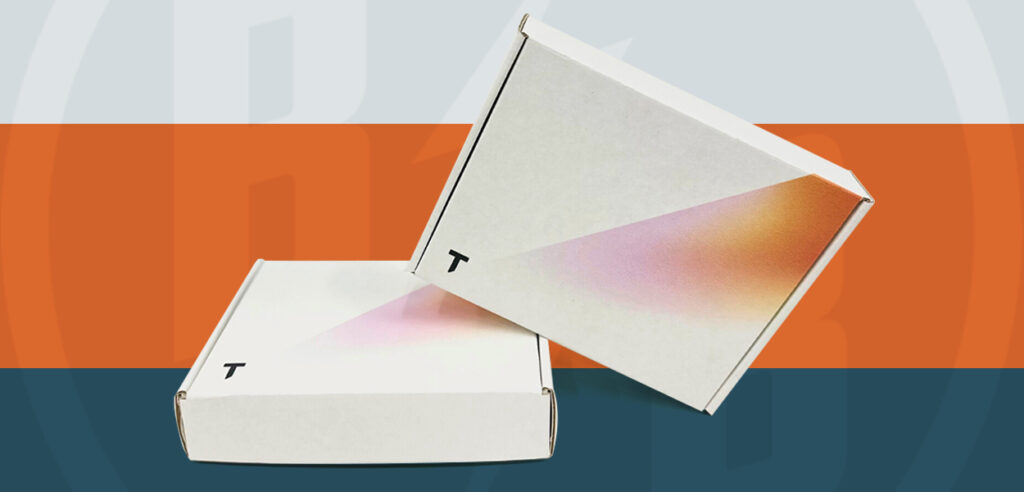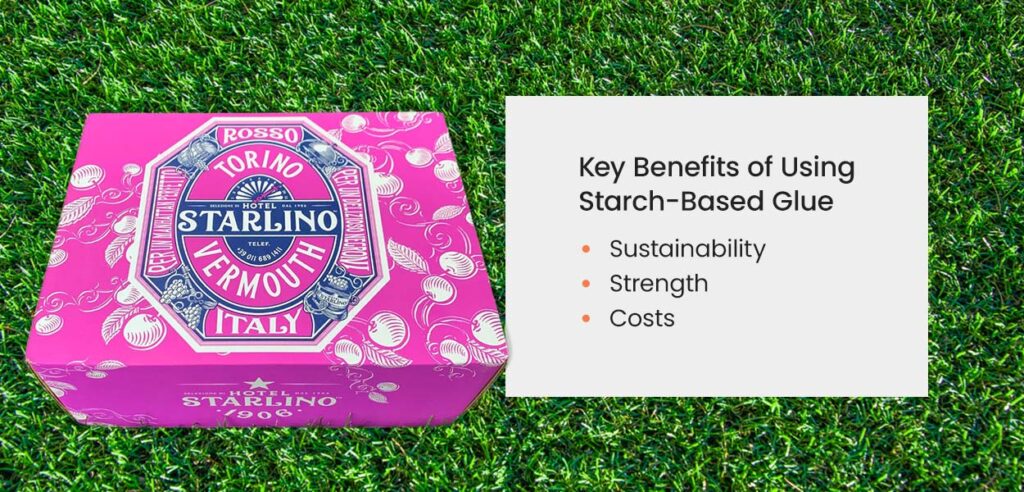
Choosing a strong glue for cardboard is a critical decision, especially if you are considering product packaging. Your business needs to ensure its boxes will remain sturdy throughout shipping and handling. The glue you pick can also significantly impact recycling and how the boxes break down once in the trash.
Whether you’re looking to save costs or reduce adverse environmental impacts, understanding the role of shipping box glues can help you make a wise decision. A quality adhesive will ensure your customers receive your products in the best possible condition.
Let’s examine which corrugated adhesive is best for cardboard shipping boxes and why you should choose the most sustainable glue option.
Before selecting an adhesive for your shipping boxes, consider the following factors.
The material you are working with is the first variable your business should pay attention to. If you use corrugated cardboard shipping boxes, you must choose a glue that will sufficiently bond to the box’s surface without damaging the material. For example, wood glue can cause the cardboard to become oversaturated and wrinkled.
The glue’s overall quality is also paramount. Choose an adhesive that keeps shipping boxes intact and sturdy. If you use a substandard option, the cardboard will not stay stuck, and boxes carrying heavier loads could end up bursting open.
Another critical factor to consider is the environment. For instance, some glues have strict temperature requirements for the application process.
Your business should also evaluate the conditions your shipping boxes will encounter during travel. For instance, water-soluble adhesives will lose effectiveness in overly warm or moist environments.
The final variable to account for is cost. The glue’s ingredients will directly impact its overall prices.
If you want to save money, your business will likely need to choose raw materials that are plentiful, easy to source and inexpensive.
When it comes to adhesives for cardboard, several options stand out depending on your specific needs. Here are the top choices:
Each adhesive offers unique benefits, so choose the one that best suits your cardboard application requirements.
When working with corrugated cardboard shipping boxes, the best adhesive to use is starch-based glue.
Starch-based glue is the best option for corrugated cardboard for a few reasons.
Your business can rely on this adhesive to assemble sturdy shipping boxes that are ready for transit. The glue dries and gelatinizes, creating a durable bond between the cardboard pieces without saturating the material.
Vegetable glue also has a minimal environmental impact, since it derives from natural elements that are readily available for production.
To create this adhesive, manufacturers use a few ingredients to create an odorless powder, then mix it with water. The powder can consist of the following components:
During the manufacturing process, vegetable glue does not require any specific temperature for application. In comparison, a protein-based glue needs a low-humidity environment and higher temperature.
Starch-based glue is moisture-curing, meaning the moisture evaporates and the glue hardens as it dries.

The benefits of starch-based glue:
Using a plastic-free and natural glue reduces waste while conserving resources. You can effectively decrease production and shipping expenses. By using starch-based glue, you also have an opportunity to establish and market your brand and its products as eco-friendly. Vegetable glue is a plastic-free alternative to tape, making it an even better choice for sustainability.